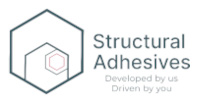Fire safety regulation enforcement in the construction industry
As we launch our A2 fire rated epoxy adhesive we at Structural Adhesives ltd are thinking more deeply about the statutes that surround the use of products such as this and how the use is governed.
In the case of A2 rated non-substantial components of a system the rating strictly depends on the application rate of the non-substantial component. A product will have been tested at a stipulated application rate and determined to have limited combustibility. If twice the amount of product were used, the amount of fuel present to burn would be double and hence the reaction to fire would be significantly increased. Using an A2 rated non-substantial component at above the tested application rate is not compliant to regulations.
As the application rate is of paramount importance who is held responsible for ensuring the correct amount is used every time? Simply, all interested parties have some moral responsibility regarding the use of the product. The manufacturers of said A2 non-substantial components have a duty to provide all relevant information and make it clear to their customers that the product is only compliant when used at the correct application rate. Their customers, for example cladding manufacturers, are then responsible for ensuring this application rate is strictly adhered to, making sure all employees using the non-substantial component are aware. The designers and architects of the building should have thoroughly researched and asked questions about the specified products to ensure they are compliant with regulations and measures are in place to ensure that the systems continue to be manufactured accordingly.
In a perfect world this communication should be sufficient to ensure that all materials that end up on high rise buildings are safe and compliant. Unfortunately, this may not always be the case due to error or negligence. For example, a warehouse employee with no knowledge of fire regulations may apply 550 g of a product rather than 500 g thinking it will not matter. There are ways to reduce this risk such as using machines to apply the exact amount of product required, or stressing the importance of the application rate but even this is not fool proof. Also, in every industry there are those that are less than honorable and will cut corners to save time or money or sell a product that may not be entirely fit-for-purpose. Policing is required to make sure that buildings are being constructed to the letter of the law but who carries out this policing?
An enforcement body is needed to monitor regulatory compliance and to administer consequences when there is a lapse. It would be impossible for an enforcement body to monitor every item produced by a manufacturer but it would be possible to carry out surprise audits- a sort of Ofsted for the construction industry.
Morally the responsibility is shared amongst many, but if a building was randomly assessed and deemed non-compliant due to incorrect use of a A2 non-substantial component who would legally be blamed for this? Where does the accountability lie? The UK government is proposing a system of duty holders with responsibilities at certain stages of construction. More clarification of how duty holders are to be appointed is required but this proposal may go some of the way to resolving the seemingly ambiguous nature of responsibility in the construction industry.
